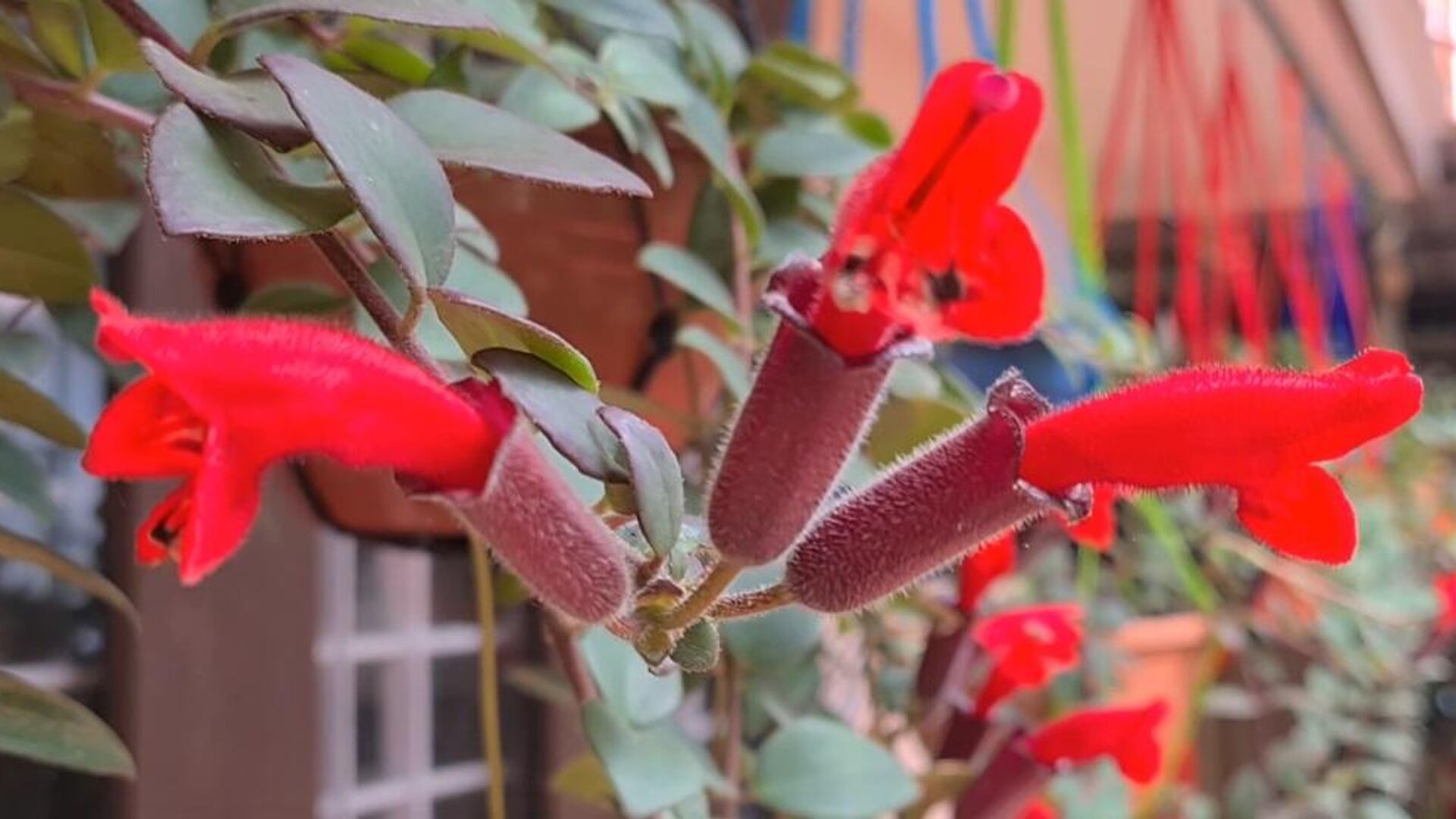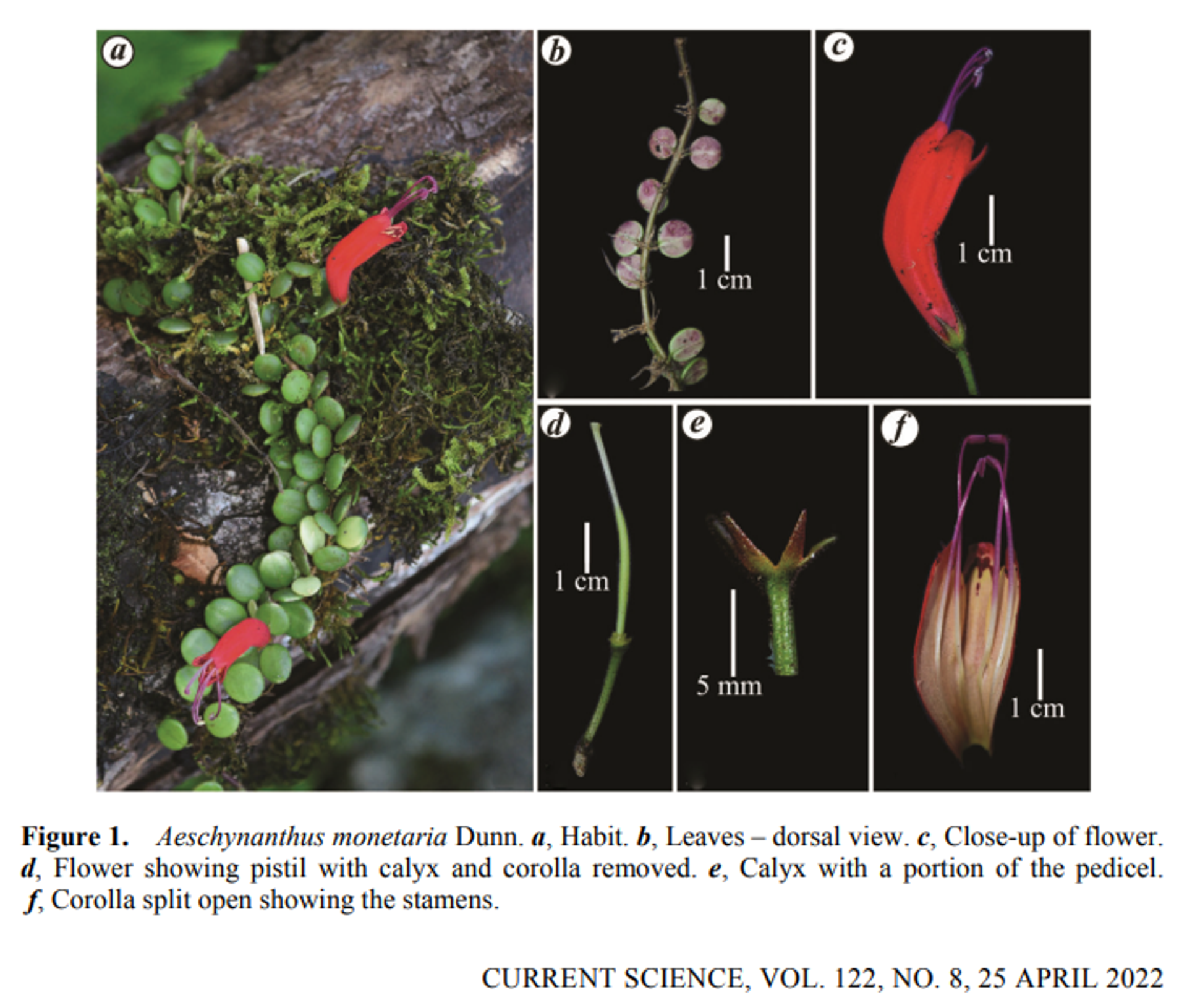https://sputnikglobe.com/20220606/rare-lipstick-plant-rediscovered-in-india-after-100-years---photos-1096047464.html
Rare 'Lipstick' Plant Rediscovered in India After 100 Years - Photos
Rare 'Lipstick' Plant Rediscovered in India After 100 Years - Photos
Sputnik International
Scientifically known as Aeschynanthus monetaria Dunn, the plant was first identified in the country by British botanist Stephen Troyte Dunn in 1912. The... 06.06.2022, Sputnik International
2022-06-06T11:32+0000
2022-06-06T11:32+0000
2022-07-19T10:44+0000
rare
rare species
rare species
discovery
new discoveries
plant
https://cdn1.img.sputnikglobe.com/img/07e6/06/06/1096054929_263:0:1253:557_1920x0_80_0_0_e3e40d7454c2a2d0742be08acad5de72.jpg
Researchers at the Botanical Survey of India (BSI) have rediscovered a rare 'Indian lipstick' plant in the remote Anjaw district of Arunachal Pradesh state after more than a century."Due to the appearance of tubular red corolla [colour], some of the species under the genus Aeschynanthus are called lipstick plants," BSI scientist Krishna Chowlu said in the report published in Current Science journal.In December 2021, Chowlu collected some Aeschynanthus specimens from Hyuliang and Chipru villages of Anjaw district while carrying out floristic studies in the region.After reviewing relevant documents and a critical study of the specimens, it was confirmed that they were Aeschynanthus monetaria Dunn, which had not been seen in India since 1912.Aeschynanthus monetaria Dunn is morphologically unique and distinct among all the Aeschynanthus species known in India.As per the Current Science journal article, which is co-authored with Gopal Krishna, the genus name Aeschynanthus is derived from the Greek aischyne or aischyn - meaning shame or to feel embarrassed - and anthos - meaning flower. The specific epithet 'monetaria' means 'mint-like', alluding to the appearance of its leaves.The Indian lipstick plant has fleshy orbicular leaves with a greenish upper surface and purplish-green lower surface.It grows in moist, evergreen forests at elevations ranging from 543 to 1134 metres, and the flowering and fruiting period is between October and January.
Sputnik International
feedback@sputniknews.com
+74956456601
MIA „Rossiya Segodnya“
2022
Sangeeta Yadav
https://cdn1.img.sputnikglobe.com/img/07e4/08/1b/1080292803_0:121:960:1081_100x100_80_0_0_7490b319dab9611e309056b177265184.jpg
Sangeeta Yadav
https://cdn1.img.sputnikglobe.com/img/07e4/08/1b/1080292803_0:121:960:1081_100x100_80_0_0_7490b319dab9611e309056b177265184.jpg
News
en_EN
Sputnik International
feedback@sputniknews.com
+74956456601
MIA „Rossiya Segodnya“
Sputnik International
feedback@sputniknews.com
+74956456601
MIA „Rossiya Segodnya“
Sangeeta Yadav
https://cdn1.img.sputnikglobe.com/img/07e4/08/1b/1080292803_0:121:960:1081_100x100_80_0_0_7490b319dab9611e309056b177265184.jpg
rare, rare species, rare species, discovery, new discoveries, plant
rare, rare species, rare species, discovery, new discoveries, plant
Rare 'Lipstick' Plant Rediscovered in India After 100 Years - Photos
11:32 GMT 06.06.2022 (Updated: 10:44 GMT 19.07.2022) Scientifically known as Aeschynanthus monetaria Dunn, the plant was first identified in the country by British botanist Stephen Troyte Dunn in 1912. The species has been provisionally classed as 'endangered' following International Union for Conservation of Nature (IUCN) guidelines.
Researchers at the Botanical Survey of India (BSI) have rediscovered a rare 'Indian lipstick' plant in the remote Anjaw district of Arunachal Pradesh state after more than a century.
"Due to the appearance of tubular red corolla [colour], some of the species under the genus Aeschynanthus are called lipstick plants," BSI scientist Krishna Chowlu said in the report published in
Current Science journal.In December 2021, Chowlu collected some Aeschynanthus specimens from Hyuliang and Chipru villages of Anjaw district while carrying out floristic studies in the region.
After reviewing relevant documents and a critical study of the specimens, it was confirmed that they were Aeschynanthus monetaria Dunn, which had not been seen in India since 1912.
Aeschynanthus monetaria Dunn is morphologically unique and distinct among all the Aeschynanthus species known in India.
As per the
Current Science journal article, which is co-authored with Gopal Krishna, the genus name Aeschynanthus is derived from the Greek aischyne or aischyn - meaning shame or to feel embarrassed - and anthos - meaning flower. The specific epithet 'monetaria' means 'mint-like', alluding to the appearance of its leaves.
The Indian lipstick plant has fleshy orbicular leaves with a greenish upper surface and purplish-green lower surface.
It grows in moist, evergreen forests at elevations ranging from 543 to 1134 metres, and the flowering and fruiting period is between October and January.



